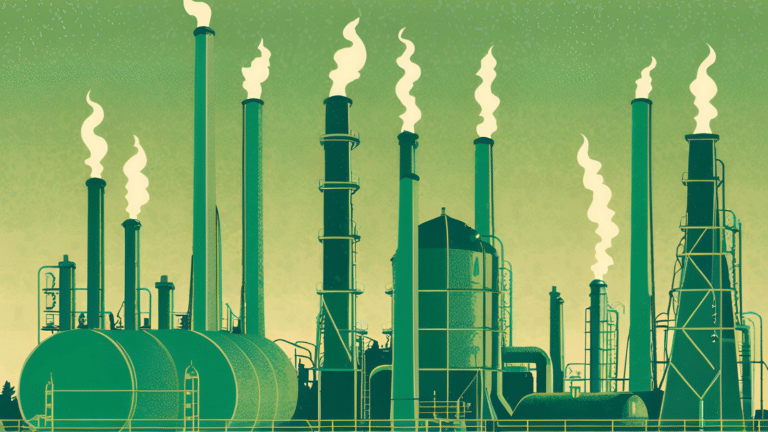This roundtable report reflects the authors’ understanding of key points made in the course of the discussion. It does not necessarily represent the views of the Center on Global Energy Policy. The summary may be subject to further revision.
Contributions to SIPA for the benefit of CGEP are general use gifts, which gives the Center discretion in how it allocates these funds. More information is available on our Partners page. Rare cases of sponsored projects are clearly indicated.
On January 25, 2023, the Center on Global Energy Policy (CGEP), Columbia University SIPA, hosted a private roundtable conducted on a not-for-attribution basis. The event focused on the short-term outlook for oil markets in light of multiple variables including Russian supply and Chinese demand, as well as the longer-term outlook amid the energy transition. Participants included senior corporate executives, civil society representatives, energy analysts, and experts from academia and think tanks. This report summarizes the discussion that took place, which included varying views on both time horizons.
The Short Term: Navigating an Uncertain Outlook for Russian Supply and a Potential Uptick in Chinese Demand amid Macroeconomic Uncertainties
The keynote speaker kicked off the event with a discussion of key short-term dynamics impacting the oil market. More than one month after the EU embargo and G7 price cap on Russian oil went into effect, and just before the same measures on Russian refined products were set to do so as well, the speaker felt that these tools, while not perfect and requiring more time before their full impact could be understood, were largely working as planned. More specifically, he felt they were preventing too much Russian supply from being displaced, and consequently keeping prices somewhat muted and lowering government-generated revenues. The speaker also expressed concern that the actions against Russian refined products would have a more disruptive market impact. (The event took place before these actions went into effect, though his remarks have since proven prescient, even as the possibility of tightening was more centered on the months leading into summer.)
The keynote speaker focused on market dynamics for 2023, seeing possible price spikes for both oil and refined products. On the demand side, he expected an increase in Chinese buying and general global demand. With this dynamic, he was concerned about whether supply would be adequate to keep up with demand. The speaker saw OPEC+ (Organization of the Petroleum Exporting Countries plus 10 additional oil-exporting countries) production as likely to remain flat through at least the next scheduled meeting in June, putting the spotlight on the trajectory of Russian production and exports. As he noted, supply elsewhere is picking up gradually, but with the US Strategic Petroleum Reserve unable to play the same role that it played last year, finding additional sources is key. With a new Iran deal likely off the table, incremental exports from Venezuela may be the only source of marginal barrels.
In the subsequent panel discussion, a sanctions expert addressed the combination of embargos and prices caps on Russian oil and refined products. He, too, saw the measures as working to keep as much Russian oil supply as possible on the market and to decrease revenues significantly from last year’s levels. The sanctions expert also felt that the product cap was trickier to implement, and may result in more market tightening amid a seasonal demand uplift in the months ahead.
Several oil market experts on the panel focused on the outlook for Russian supply, offering mixed views. One expert stated that he expected very little change in Russian oil supply, noting that the ability of refined products to find new markets and blend or push into shadow markets may mean a limited impact in the near term (i.e., a minor dip during the initial months). Regarding Russian oil supply in the longer term, he felt that production could modestly grow over the coming years, though perhaps along a different trajectory compared with that prior to the war. Other experts anticipated a lasting impact on the product market side (beyond just a few months), with one foreseeing a greater impact on the gasoline market in particular, a view that breaks from the more conventional expectation of a disrupted diesel/middle distillate market.
The remainder of the panel discussion was largely focused on China. In addressing product markets, participants identified Chinese export quotas for its refineries as a key variable—the government may be pulling back slightly on these quotas to return to more sustainable levels, though participants noted mixed signals on how this will take shape. A final area of discussion was resurgent Chinese demand following China’s reversal of its zero-COVID policy. Most participants felt that Chinese buying would return gradually over the course of this year, albeit in fits and starts and more so after the inventories they built up domestically (for both oil and refined products) were drawn down. One expert labeled China’s broader economic outlook as a “dynamic attempted recovery,” which neatly summarized the pathway ahead.
The Long Run: The Outlook for Oil Demand Amid the Energy Transition
The second part of the event focused on the outlook for oil markets, particularly demand, over the coming decades. The presenters and other participants held a healthy debate on the topic, with some expressing views at odds with the forecasts published by organizations, such as the International Energy Agency, that have advocated for a faster transition.
The discussion was kicked off by an expert who is renowned for various leadership roles around the world and in the energy industry. The expert’s overall outlook was underpinned by the view that the world would see an overall “addition of energy” that will require more of all sources of supply, especially in the short term. In terms of oil specifically, his view was that demand would grow for at least another decade and potentially longer, just as coal consumption grew over the past few decades despite efforts to mitigate its expansion. He saw the same trajectory for gas and liquefied natural gas. Nevertheless, he saw a growing need for a concerted decarbonization effort, and contended that policies toward this end should be focused on improving the reporting and verification of data around emissions. In his view, this would allow metrics to better align with the realities of consumption around the world, especially in developing markets where opacity is greater.
The other experts on the panel agreed that oil demand had a long runway of growth. One felt that it would grow by as much as 1 to 1.5 million barrels per day (b/d) per year for the rest of this decade—putting his outlook among the highest available industry forecasts. This expert felt that the growing needs of developing and emerging markets would underwrite this growth despite plateaus and eventual declines in developed markets. He also felt that the domestic market in the United States would take a long time to displace demand for oil and refined products, including any impact from electric vehicles. More broadly, the panelists felt that supply will need to keep up with the trajectory of demand, though they saw signs that capital spending has already begun to align with the trajectory of consumption. They also noted that supply was unlikely to become overabundant in the near future given capital discipline within the industry and requirements from investors for greater returns and cash flow generation (in addition to generally lower industry spare capacity, including from OPEC+).
Several participants felt that some of the experts’ projections for how high demand could reach were somewhat optimistic. They noted that, while forecasts for an imminent peak followed by a quick decline were likely overambitious, a combination of electrification and policy support for reduced oil usage would produce an accelerated impact. Despite this disagreement about oil demand, most participants felt that consumption was likely to remain at least at current levels through 2030 at the least. Correspondingly, they (including the keynote speaker) noted that some of the messaging around the energy transition may need to shift to acknowledge this reality—and that, while efforts to accelerate decarbonization should continue, maintaining adequate supply to ensure energy affordability and security is critical. Finally, many felt that pushing the overall industry debate to include as many consumers, producers, policy makers, investors, and other stakeholders as possible (and, notably, the development and economic expansion needs of emerging markets) is the most ideal path forward.





